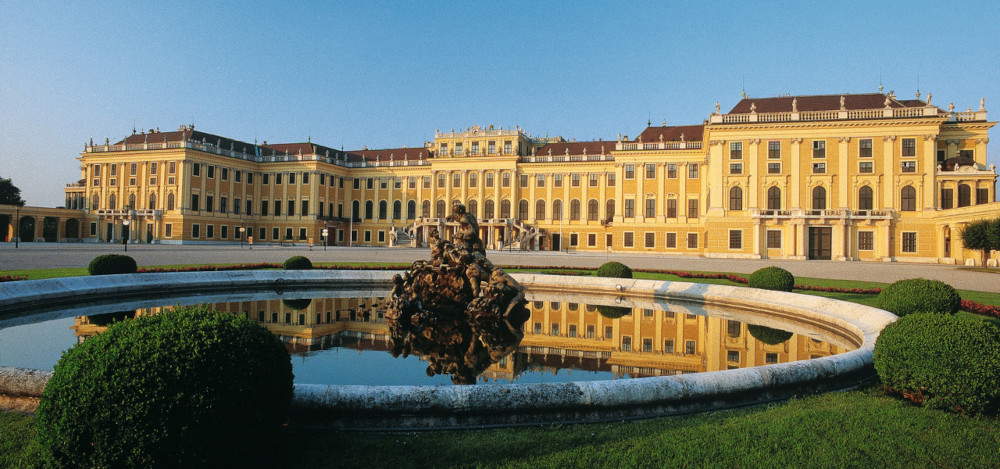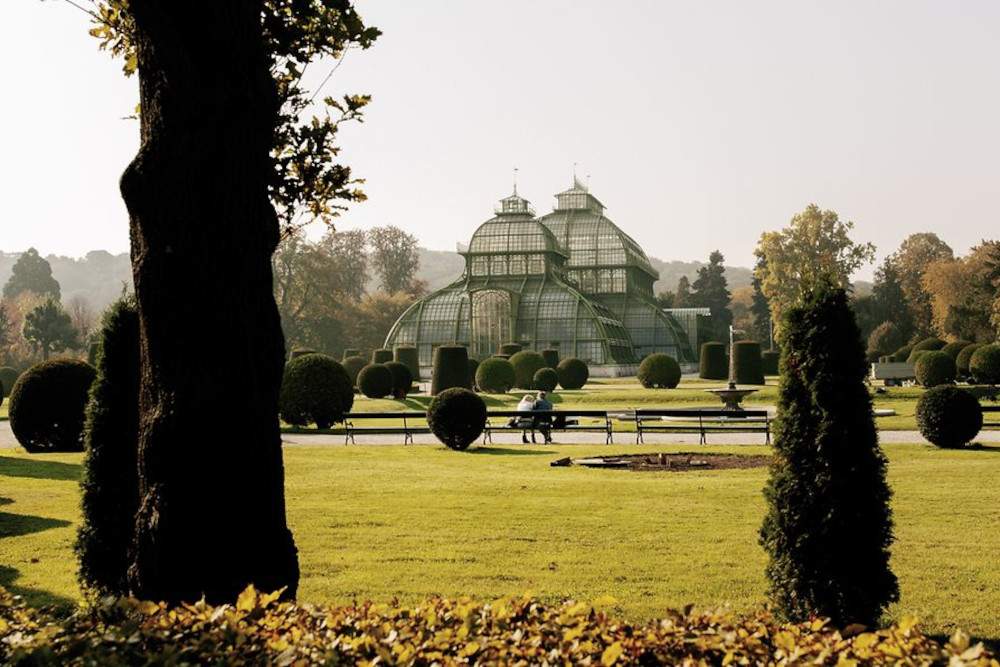In a few daysautumn will begin, and what better time to enjoy the Austrian capital with its foliage? The Prater turns a thousand shades and becomes truly enchanting, and walking through Schoenbrunn Park will be an unforgettable experience. Opened to the public around 1779, it has been onUNESCO ’s World Heritage List since 1996 along with Schoenbrunn Palace. It is popular with citizens and tourists alike and stretches 1.2 kilometers from east to west and about one kilometer from north to south. Filled with splendid fountains, statues, and monuments, including the famous and imposing Gloriette (from which there is an excellent view of Vienna), built in 1775 to celebrate the Battle of Kolin in which Austria defeated Prussia in 1756, the Park includes the Imperial Carriage Museum, the Crown Prince’s Garden, the Orangery Garden, the Labyrinth, the Japanese Garden, the Zoological Garden, the Palm House, and the Desert House. Schoenbrunn Palace with its Park was the summer residence of the Habsburgs and is considered one of the most beautiful Baroque buildings in Europe. Owned by the Habsburgs since 1569, Ferdinand II’s wife, Eleonora Gonzaga, had a noble residence built there in 1642. It was Maximilian II’s hunting reserve, castelletto with Eleonora Gonzaga; after 1743, with Maria Theresa of Austria, the palace took on its present appearance.
Today Schoenbrunn Palace has 1,441 rooms, but only forty-five can be visited. Among the most beautiful are the Hall of Mirrors, where the young Mozart played at the age of six; the Grand Gallery, where the Congress of Vienna of 1814-1815 was held; the Hall of Ceremonies and the Blue Chinese Salon, where Emperor Charles I signed in 1918 his act of renunciation of government; the Vieux-Laque Room where he conferred with Napoleon; and finally the Chamber of Millions, panelled in rosewood and decorated with precious miniatures, is among the finest Rococo rooms in the world.

In Schoenbrunn Palace Park is the Palm Greenhouse, commissioned in 1882 byEmperor Franz Joseph. It is Europe’s largest palm greenhouse, 111 meters long, with 2,500 square meters of grounds and 4,900 square meters of glazed area. Inside are, divided into three pavilions, Mediterranean, tropical and subtropical plants according to different climatic zones. Thus there are plants from the Canary Islands, South Africa, America and Australia; plants from China, Japan, the Himalayan region and New Zealand; and plants from the tropics. A palm tree about 23 meters high and between spring and summer also the world’s largest water lily can be seen here.

We have been among the halls of Schoenbrunn Palace and its huge Park, but what did the Habsburg furniture look like? The Vienna Furniture Museum brings together more than six thousand of them. In 1747 Maria Theresa of Austria had a sort of central warehouse built, called the Court Furniture Inspectorate, which could be called upon whenever a particular piece of furniture was needed. Located in Andreasgasse in the seventh district, the museum has been open to the public since 1998, and the exhibits encompass a time span of five centuries, with a focus on Biedermeier and Historicism. Fifteen Biedermeier rooms are reconstructed in every detail with original period pieces, and among the furniture on display are a valuable desk of Maria Theresa and a secrétaire of her daughter Marie Antoinette, as well as the cradle that the city of Vienna gave to the newborn Crown Prince Rudolf in 1858. One section is devoted to the award-winning Thonet firm, with a wide selection of pieces, and another section offers an overview of the great names in Austrian architecture and design between the 19th and 20th centuries. Finally, the permanent exhibition Sissi im Film presents reconstructions of settings and costumes from the films starring Romy Schneider dedicated toEmpress Sissi. A dream for fans of the 1950s trilogy that tells the story of the young empress. Also featured are set photos, playbills and video excerpts.

 |
| Autumn in Vienna, including foliage and Schoenbrunn Park |
Warning: the translation into English of the original Italian article was created using automatic tools. We undertake to review all articles, but we do not guarantee the total absence of inaccuracies in the translation due to the program. You can find the original by clicking on the ITA button. If you find any mistake,please contact us.